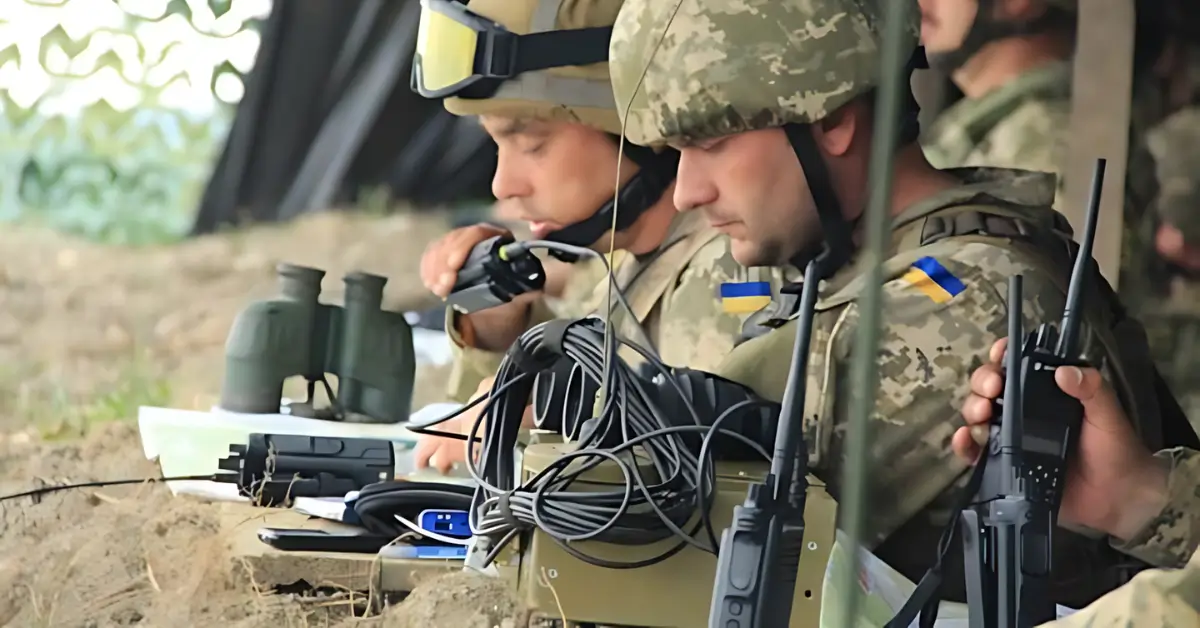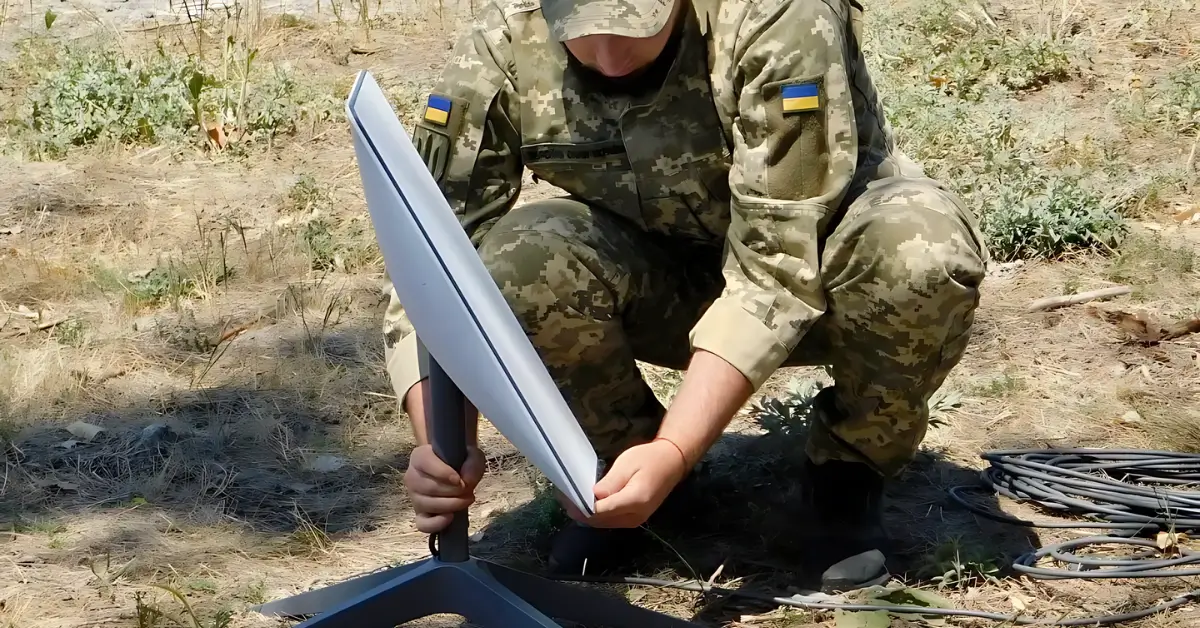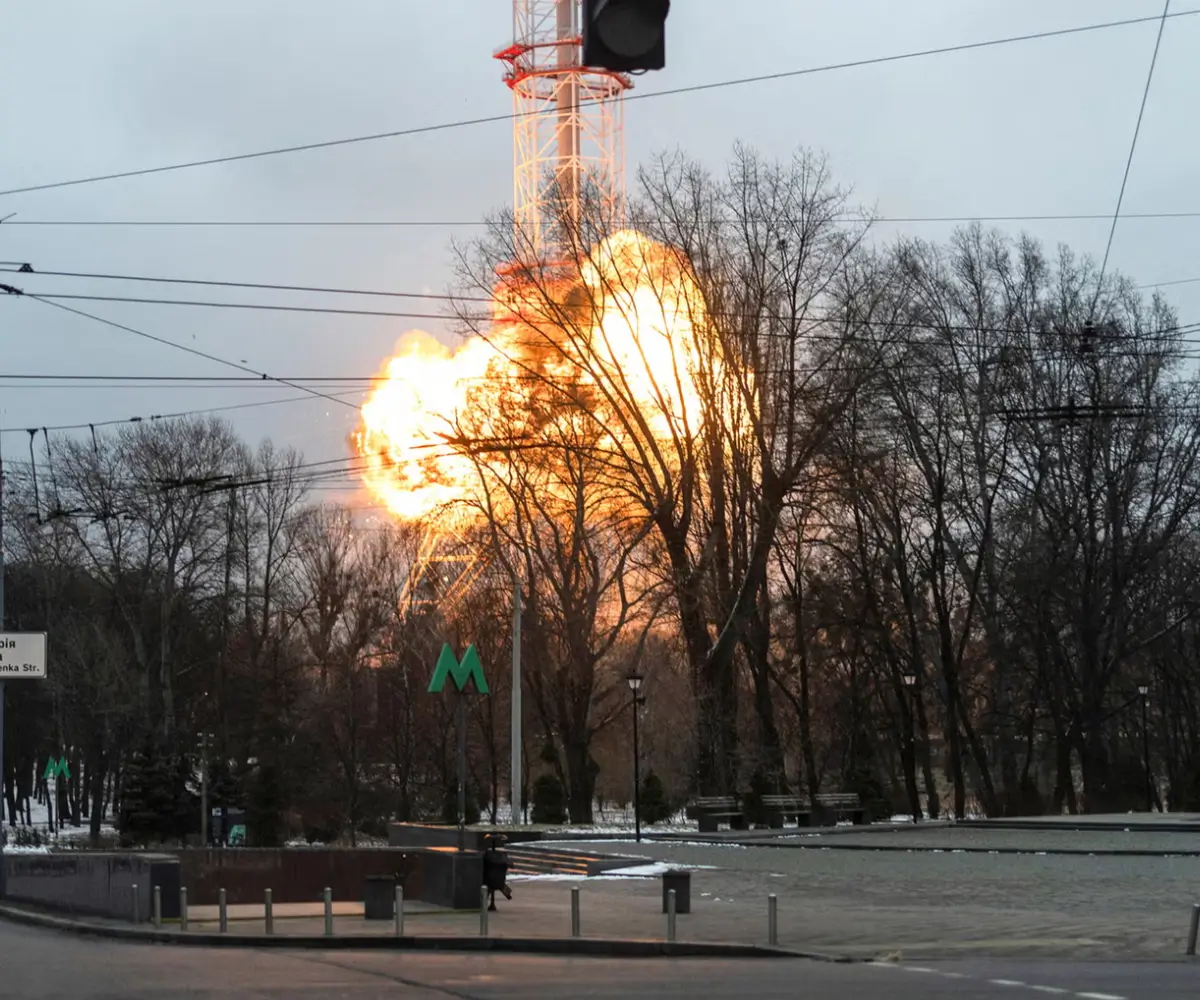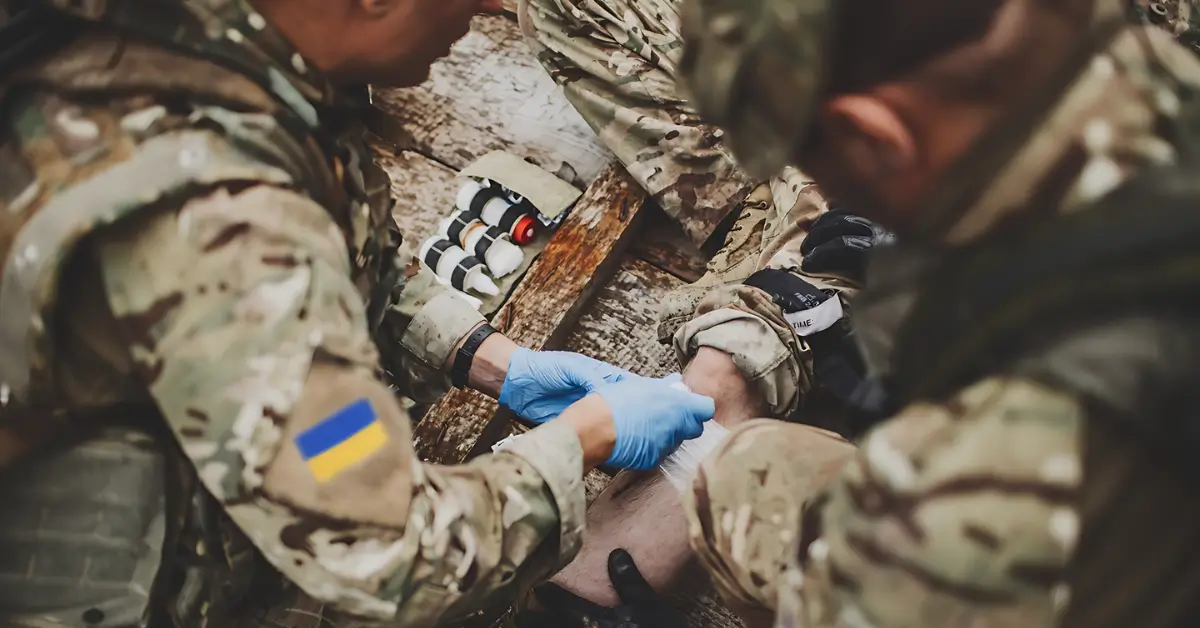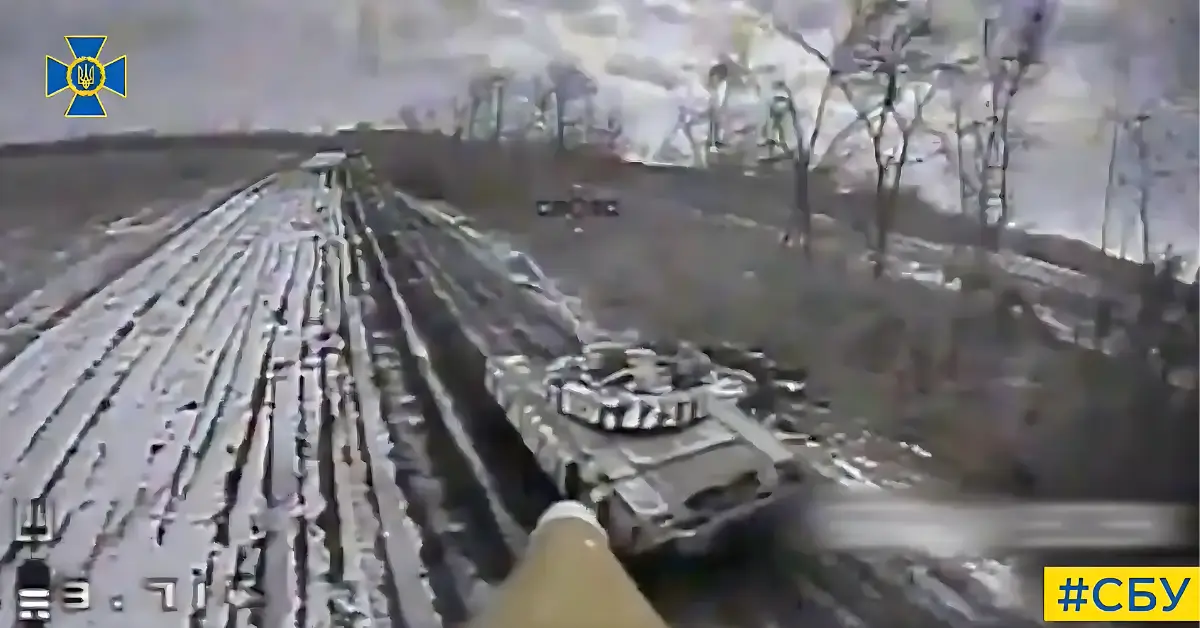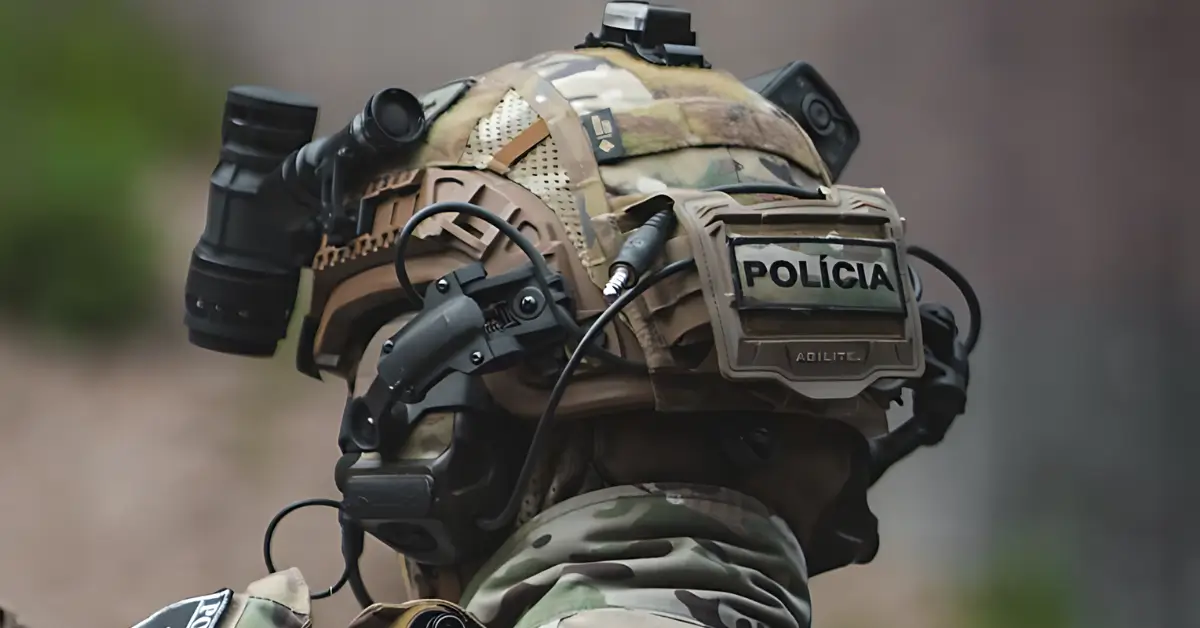The ongoing conflict in Ukraine serves as a modern testing ground for military communication strategies. This analysis delves into the communication networks employed in the Ukrainian theatre, examining their advantages, challenges, and key learnings. The insights gained are critical for military strategists planning future operations in contested electromagnetic environments, where effective communication can determine success or failure.
Communication Networks in Focus
LTE Networks
Предимства:
- High Bandwidth: LTE networks support data-intensive applications, essential for real-time intelligence and coordination.
- Оперативна съвместимост: These networks facilitate seamless integration between military and civilian systems.
- Familiarity: Many personnel are already familiar with LTE technology, reducing the time and cost associated with training.
Challenges:
- Vulnerability: LTE networks are susceptible to jamming and interception, compromising operational security.
- Infrastructure Dependence: Reliance on physical infrastructure makes LTE networks vulnerable to targeted attacks.
- Congestion: In urban areas, civilian network congestion can hinder military operations.
Learnings:
- Flexibility in Damaged Infrastructure: Tactical LTE systems have proven invaluable in areas with compromised infrastructure.
- Satellite Integration: Combining LTE with satellite backhaul (e.g., Starlink) enhances network resilience.
- Network Hardening: Protecting LTE networks against cyber and electronic warfare threats is paramount.
Satellite Communications
Предимства:
- Global Coverage: Satellite networks provide communication capabilities even in remote areas.
- Resilience: These networks remain operational even when ground-based infrastructure is destroyed.
- High Bandwidth: Systems like Starlink offer significant bandwidth, supporting high-volume data transfer.
Challenges:
- Jamming Vulnerability: Sophisticated jamming and cyber attacks can disrupt satellite communications.
- Signal Latency: Delays in signal transmission can affect the timeliness of critical decisions.
- Cost: The expense of satellite communication systems and services can be prohibitive.
Learnings:
- Redundancy through Diversification: Using multiple satellite providers ensures communication continuity.
- Training and Interfaces: Rapid deployment training and user-friendly interfaces are essential for effective satellite communication.
- Anti-Jamming Measures: Developing robust anti-jamming capabilities is critical to maintaining satellite network integrity.
Tactical Radio Networks
Предимства:
- Military-Specific Design: These networks, with robust encryption and jam-resistant features, are built for battlefield conditions.
- Ruggedness: Designed to withstand harsh environments, ensuring reliability under fire.
Challenges:
- Bandwidth Limitations: Tactical radio networks offer lower bandwidth compared to commercial systems.
- Integration Complexity: Integrating these networks with other communication systems can be challenging.
- Electronic Warfare: The constant battle against enemy electronic warfare efforts requires continuous innovation.
Learnings:
- Flexibility with SDRs: Software-Defined radios (SDRs) provide adaptability in electronic warfare environments.
- Advanced Technologies: Frequency hopping and spread spectrum technologies are vital in maintaining secure communications.
- Investment in Jam-Resistance: Ongoing investment in jam-resistant technologies is crucial for maintaining operational capabilities.
Mesh Networks
Предимства:
- Resilience: Mesh networks are decentralised, making them less vulnerable to single points of failure.
- Self-Forming and Self-Healing: These networks automatically adapt to changing conditions, ensuring continuous communication.
- Urban Effectiveness: Mesh networks excel in urban environments where other signals may be blocked.
Challenges:
- Range Limitations: Individual nodes have a limited range, requiring careful network planning.
- Complexity: As the network size grows, managing it becomes increasingly complex.
- Detection Risk: The electromagnetic emissions from mesh networks can increase the risk of detection.
Learnings:
- Urban Combat Utility: Mesh networks provide critical fallback communication in urban combat scenarios.
- Integration with Longer-Range Systems: Extending the utility of mesh networks by integrating them with longer-range systems is essential.
- Emission Control: Implementing strict emission control protocols minimises detection risks.
Cellular Networks
Предимства:
- Existing Infrastructure: In populated areas, cellular networks offer widespread infrastructure that can be leveraged for military use.
- High Bandwidth and Low Latency: These networks support fast, high-volume data transfer.
- Familiarity: Civilian populations are familiar with cellular networks, making them useful for information dissemination.
Challenges:
- Physical and Cyber Vulnerability: Cellular networks are highly susceptible to physical destruction and cyber attacks.
- Congestion: During crises, these networks can become easily overloaded.
- Enemy Exploitation: There is a risk of adversaries exploiting civilian networks for intelligence.
Learnings:
- Rapid Restoration with Mobile Towers: Deployable mobile towers (COWs/COLTs) are vital for quickly restoring infrastructure.
- Securing Networks: Ensuring cellular networks are secure against interception and spoofing is critical.
- Congestion Management Protocols: Effective protocols to manage network congestion during crises are necessary for operational success.
Secure Messaging Apps
Предимства:
- End-to-End Encryption: Secure messaging apps provide robust encryption for sensitive communications.
- User-Friendly: These apps are generally easy to use, facilitating quick adoption by personnel.
- Availability: Widely available on commercial smartphones, making them accessible in most environments.
Challenges:
- Infrastructure Dependence: These apps rely on commercial infrastructure, which may not always be secure or available.
- Device Vulnerabilities: The devices’ security can be a weak point.
- Operational Security Risks: User errors can lead to significant operational security breaches.
Learnings:
- Strict Protocols: Implementing strict operational security protocols is essential when using commercial apps.
- Military-Specific Platforms: There is a need for vetting or developing military-specific secure messaging platforms.
- Informal Communication Utility: These apps are valuable for rapid, informal communication and civilian coordination.
Emerging Technologies in Military Communication
As the battlefield continues to evolve, emerging technologies hold the potential to revolutionise military communication systems, providing enhanced capabilities and greater resilience.
Quantum Communications
Quantum communication technology offers the promise of unhackable communication channels through quantum encryption. While still in its developmental stages, this technology could significantly enhance the security of military communications, making it immune to traditional forms of interception and hacking.
Future Potential:
- Unbreakable Encryption: Utilises the principles of quantum mechanics to create secure communication channels.
- Long-Distance Communication: Quantum entanglement could enable instant, secure communication over vast distances without the need for traditional infrastructure.
- Operational Resilience: In combination with existing technologies, quantum communication could provide a new layer of security in high-stakes environments.
Satellite Constellations
New satellite constellations, such as those being developed by SpaceX and other commercial providers, are set to expand global communication capabilities. These constellations promise to provide high-speed, low-latency communication across the globe, including in remote and contested areas.
Future Potential:
- Global Coverage: A dense network of low-Earth orbit satellites could offer near-instantaneous global coverage, improving connectivity in even the most remote locations.
- Resilience: The sheer number of satellites could provide redundancy, ensuring continuous communication even if some satellites are compromised.
- Оперативна съвместимост: These systems could be integrated with existing military networks, providing a versatile and resilient communication backbone.
Interoperability Between Networks
Improving interoperability between different communication networks is crucial in modern military operations. Seamless integration of various systems ensures that data and communication can flow smoothly across multiple platforms, enhancing coordination and operational efficiency on the battlefield. As networks continue to diversify, unifying them into a cohesive communication structure becomes increasingly important. This allows for more flexible and resilient communication strategies in complex environments.
Artificial Intelligence (AI)
Artificial Intelligence is increasingly being integrated into communication systems to improve their efficiency, security, and adaptability. AI can manage network traffic, detect and respond to cyber threats in real-time, and optimise communication pathways for speed and reliability.
Future Potential:
- Network Management: AI can autonomously manage and optimise communication networks, ensuring that bandwidth is allocated where it is needed most.
- Cybersecurity: AI-driven systems can detect and mitigate cyber threats faster than human operators, providing an additional layer of defence.
- Adaptive Communication: AI could enable communication systems to dynamically adjust to changing battlefield conditions, ensuring uninterrupted communication in complex environments.
Ensuring Resilience in Modern Military Communication
The Ukraine conflict underscores that no single communication system can meet the demands of modern warfare. A layered approach, leveraging multiple technologies, is essential to ensure redundancy, flexibility, and resilience in the face of enemy actions and the chaos of the battlefield.
Key Takeaways for Military Planners:
- Prioritise Diversity and Redundancy: Incorporate various communication systems to ensure continuous operation.
- Invest in Flexible Systems: Software-defined systems allow for rapid adaptation to changing conditions.
- Leverage Commercial Technologies: Integrate commercial solutions while recognising their limitations.
- Enhance Electronic Warfare and Cybersecurity: Develop robust capabilities to defend against electronic and cyber threats.
- Emphasise Training: Continuous training is crucial to maximise the effectiveness of communication tools.
- Prepare for Denied Environments: Plan for operations where communications may be compromised or denied.
- Embrace Emerging Technologies: Monitor the development of quantum communications, satellite constellations, and AI to integrate these advancements into future communication strategies.
As warfare evolves, the ability to maintain resilient and adaptive communication networks, enhanced by emerging technologies, will be a decisive factor in achieving military success.
The conflict in Ukraine highlights the critical need for resilient communication networks in modern warfare. MSS Defence offers cutting-edge communication solutions designed to enhance mission readiness and ensure reliable communication in any situation. Contact one of our communication experts today to explore custom solutions tailored to your operational needs.
